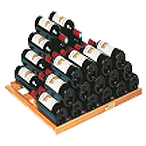Restaurant Wine Ordering Guide
Our 9-step approach of getting the best experience when ordering wine when dining out.
The BottleCru Restaurant Wine Ordering Guide, outlined below, offers a professionally crafted approach to ordering a wine, you will really enjoy, when dining out. Follow these simple step-by-step instructions to navigate, with confidence, the process of selecting and ordering a wine in a restaurant. This process leverage the wines the restaurant has, which will go best with your meal and the knowledge the restaurant sommelier have of both their wines and how your meal will be prepared.
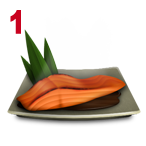
Select the Meal
WAIT! Don’t be intimidated by a server asking what you would like to drink! If you want to really enjoy your wine with food, unless you’re having a glass to prepare for the meal, first decide on what meal you and your fellow diners are having!
Wine and food should complement each other, not overwhelm or clash in perceived weight or flavor. A full body wine can overwhelm a delicate lighter dish and a lower acid wine can be difficult partner for higher acid foods.
Now, there are certain wines that pair with a wide range of foods, the best examples being Pinot Noir and Champagne, they are also some what of a compromise pairing.
Also when dining in a group where everyone’s eating different dishes, try to make a wine selection that will pair with what others at the table are eating so that you can all share the same bottle. You can also refer to our Classic Food Parings guide for some, guidance.

State Your Style Preferences
Remember, sauces and cooking preparation and spices directly effect what makes a great wine pairing. So the server knows how the food is being prepared, they can confirm you’ve selected a preferred pairing.

Seek Suggestions
Now, ask the server to suggest a wine based on the style preferences you’ve just shared with them. If he knows the wine list well, he’ll be able to help you, but if he hesitates or seems uncertain, don’t be afraid to ask to speak with someone on staff with more wine knowledge. There’s almost always someone there who does if it’s a fine dining restaurant. Ask for their opinions about what matches your preferred style and the meal, not what they love!
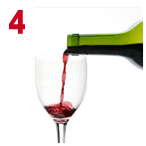
Seek the Best Value
Set a price range you’re willing to spend and communicate it to your server. If you’re with guests and being discreet about your budget, there are subtle ways to do this by pointing to wines on the list that are within your price range. Most servers will give you a couple suggestions, one that is high priced and one that’s lower priced. Just remember, wine quality and price are only loosely related, so ask the server directly if the wine you’re considering is of the style you referenced and of the best value.
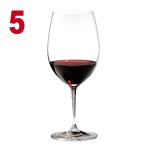
Ask for a Taste
This step is important! Ask the server if they’ve recently tasted the wine they’ve suggested. Understand that in restaurants with large wine lists, most of the servers are winging it when it comes to making wine suggestions. Most can recall with absolute confidence the flavor and style of only a handful of labels. Unless your server is tasting wine on a nightly basis or is a professional sommelier, he/she simply cannot maintain an accurate memory of the wines on the list. So, don’t hesitate to ask for a taste or if the server has wine notes that they can reference. Just be cool about it! Many high quality restaurants and especially wine bars will be happy to pour you a taste, even from a closed bottle.
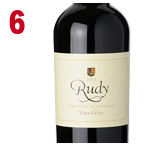
Confirm the Wine’s Freshness
Ordering by the glass is the most expensive way to purchase wine, but great for investigating wines that are new to you. Again, don’t hesitate to ask for a taste before you spend money on that heavily marked up glass of wine. Also, be aware that wines served by the glass are often stored improperly, so they might have oxidized or been kept at the wrong temperature in the hours they’ve been opened. Ask for a taste from a fresh or recently opened bottle
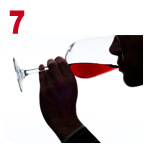
Check the Label
Make sure that the wine you’ve selected is the one that’s actually brought to your table. When your server presents the bottle and points out the producer, wine type, and vintage, this isn’t just for show! It’s your opportunity to confirm that the bottle is indeed the one you ordered. Ask to hold onto to the wine list until you’ve verified the bottle. Many restaurants carry multiple labels from the same producer, so mix-ups can happen. The difference in price and quality between two bottles from the same producer, even of the same wine type, can be HUGE. Make sure that the wine you’ve selected is the one brought to your table especially the vintage which is often changing. Especially old-world wines can change substantially from vintage year to year.
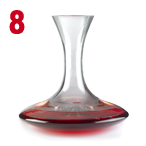
Consider Decanting
If you’re being served by with a professional sommelier, ask them if they should decant your wine. If not the BottleCru app has decanting recommendations for each wine style which is helpful making your own decision based upon it’s bottle aging.
Most wine lovers decant only older red wines but some argue that all wines benefit from decanting. The reasons to decant are to more fully aerate the wine to release all the aromas and to pour any bottle settlement, which may have developed as the wine aged. But there’s nothing bad about that sediment. It’s just a matter of personal taste. By the way, just popping the cork does nothing for aerating or letting the wind breathe. You have to actually pour the wine to get air into it.
Remember, that decanting into a warm decanter can effect the temperature of a win, but if necessary, decanters can be put into ice buckets as well to cool the wine.

Taste the Wine & Rate It
If the wine doesn’t taste as described or is flawed, tell your server and ask for either another bottle or another wine. Most restaurants expect a certain number of their wines to be flawed, and are able to return them to their wine distributor at no cost to them. Also wine that you may not care for but isn’t flawed will almost always be sold off by the glass or shared with the staff.
Also tell the server if the wine is not the right temperature especially if it’s too warm can it use some time in an ice bucket with water.
Take a snapshot of the wine label using the BottleCru app and then give it a 1 to 5 star rating. Makes some notes to help you remember the aspects of the wine you may or may not have enjoyed. This will create a personal tasting history of every wine you try, allowing you to share and compare tasting experiences with your friends and other wine lovers. It will also enable us in the future to recommend wines you’ll enjoy.
If you’ve had a great experience, be sure to tell both your server and the sommelier and reflect it in the tip you leave or give to both of them.





